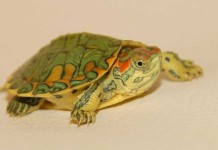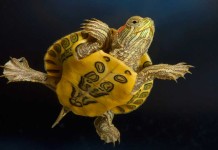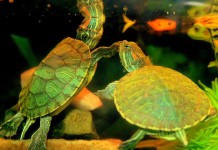Red eared slider food is a popular bone of contention among many turtle hobbyists. Many out there are content with just providing their turtles the pellets and supplements provided by the pet store, but most will argue that you should try to emulate the turtles’ diet in the wild as much as possible. The latter folks have the right idea! The fact of the matter is that pellets should only comprise 25% of your sliders diet, if that. If you put your turtle on an all-natural diet, you can cut the pellets out entirely.
On an all-natural diet, your red eared slider’s food should first consist of live food. While younger sliders tend to be more carnivorous, sliders of any age will enjoy chasing their food around the tank and getting some much-needed exercise. Only feed food bought commercially, as food taken out of the wild may contain parasites. Live food you can feed your slider includes crickets, wax worms, earthworms, blood worms, aquatic snails, daphnia, silkworms, krill, mealworms, and feeder fish or tadpoles for larger turtles. Avoid frozen versions of any of the above, as freezing reduces the nutrient quality of food.
When it comes to plants as food of red eared slider, there are many options. You can feed them dandelion, mustard and collard greens, squash, carrots, green beans, bok choy, kale, and romaine lettuce or other dark, leafy greens. Iceberg lettuce is practically nutrient-free so avoid it altogether. You can also provide aquatic plants, such as anacharis, water lettuce, duckweed, water hyacinth, for-bit and fairy moss (azolla). Fruits are alright, such as berries, apple, banana and melon, but only sparingly as they are not found in the sliders’ natural environment and may cause diarrhea.
As you can see, what you are really trying to do here is make your red eared slider’s food as close to what it would have in the wild as possible. Chopped, cooked beef and chicken are therefore a big no-no if you’re looking for an all-natural diet.
You should also provide a reptile multivitamin with vitamin D3 and calcium mixed in your red eared slider food a couple of times a week. A good way to make sure your slider gets plenty of calcium is give him a cuttlebone to chew on, whether it’s floating in the water or affixed to the side of the tank. Another option to consider when feeding vegetables is to shred them first, especially if you have smaller turtles. They need to be able to fit it in their mouths after all!
Recommended: Aquatic Turtle Diet, 3.5-Pound











